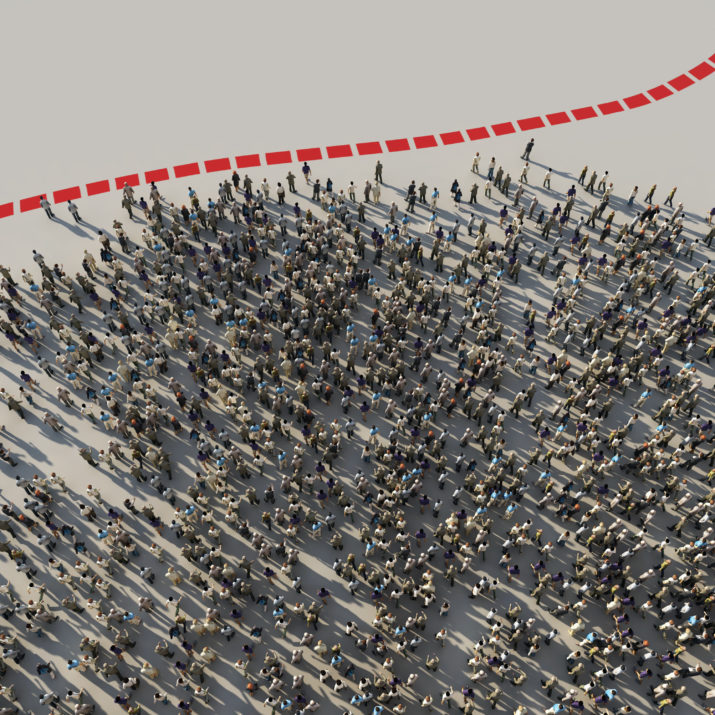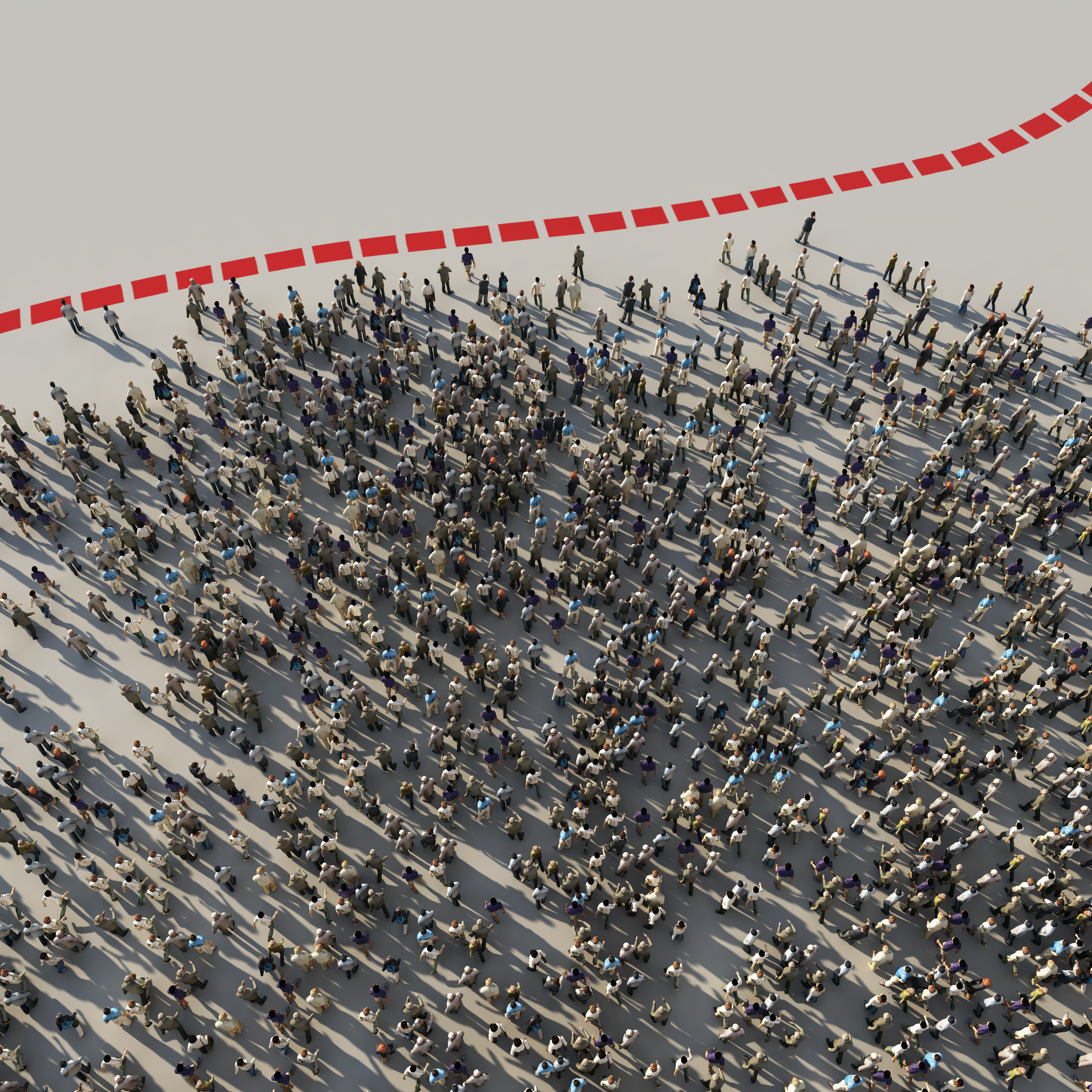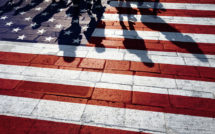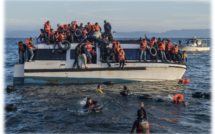

“Although people have been relocating for millennia, migration and related phenomena seem to have dominated our headlines in the last few years. Is migration happening on a larger scale today, or is this just a matter of perception?” So began the course description for “Moving Histories: Migrations, Displacements, and Diasporas,” which I taught at Emory University in spring 2019. Here I will recount some challenges I faced in designing the course, describe a typical class meeting, and share a few assignments that worked well.
Ever since an exams question had asked what topics I would include in a migration history course, I had been keeping a mental list of syllabus ideas. However, once I started actually planning the “Moving Histories” class, I quickly realized how challenging the task of creating the course would be. After all, migration has happened throughout human history and all over the world. What made sense to cover in a single semester? Should I look at ancient migrations as well as modern ones? Should I include case studies from every inhabited continent? After much back and forth and many syllabus drafts, I decided to focus on Europe—my own area of expertise—while also including non-Western experiences, such as the partition of India and Pakistan and Algerian migration to France. Next I needed to determine the course flow and structure. I wanted to introduce my students to innovative ideas in migration scholarship, but I also did not want to overwhelm them with theory. How then could I strike balance between broad concepts and concrete examples? Furthermore, which case studies would fit the course themes without causing temporal or geographical whiplash? After some searching, I discovered Global Migration: Patterns, Processes, and Politics (2016) by Elizabeth Mavroudi and Caroline Rose Nagel, a concise and accessible primer on migration and diaspora studies.
Having selected the main textbook, I then chose to divide the semester into three units: terms and theory, historical migrations, and current events. The first few weeks focused on broad concepts, such as statelessness, the freedom of movement, and attempts to regulate migration. The second and longest unit (six weeks not including spring break) looked at historical case studies, including interwar refugees, Israel’s right-of-return policy, and post-Cold War migration. During this unit, many readings came from Tara Zahra’s The Great Departure: Mass Migration from Eastern Europe and the Making of the Free World (2016), along with various news and journal articles. The aim of the last several weeks was to apply earlier concepts to understanding the 2015 Refugee Crisis, Brexit vote, and other current events. Our main reading during this portion was The New Odyssey: The Story of the Twenty-First Century Refugee Crisis (2017), British journalist Patrick Kingsley’s firsthand account of refugee migration to Europe. Through this three-unit structure, the content developed naturally over the course of the semester.
With the syllabus completed, I now needed to plan for the actual class meetings. Beyond simply understanding the material, what did I want students to gain from the class? In all my courses, I desire for my students to become critical thinkers and effective communicators, but I was not sure of the best way to achieve this goal with a divisive, complex topic like migration. After much consideration, I found a way to make sure they explained core issues and shared their informed opinions: by co-leading discussions once during the semester. In pre-assigned pairs, they came up with five questions which they submitted in advance, summarized the main points of the reading, and taught their peers about a relevant outside source of their choosing. While some students obviously felt more comfortable with this exercise than others, the feedback was overwhelmingly positive. They noted that the assignment helped them take ownership of the material, boosted their confidence in public speaking, and made them more active participants during other student-led discussions.
Along with building critical-thinking and communication skills, my goal was to teach students to think historically, that is, to analyze the past on its own terms. To this end, I incorporated role-playing activities that required students to apply core concepts by placing themselves in someone else’s shoes. For instance, after reading a chapter from John Torpey’s The Invention of the Passport (2000) and an article about the Italian Passport Law of 1901, students were assigned roles as either Italian peasants or as officers in Italy’s General Commission for Emigration. After several minutes of mock interviews, we reconvened to debrief. What information did the “officers” hope to find and why? What evidence did the “émigrés” emphasize in making their case? Although I could tell that most students enjoyed exercises like this one, I was surprised by just how positive their overall feedback was. One student remarked that these activities “were helpful in fostering an environment that enabled [him] to think critically and assess [his] own viewpoints as well as learn from others,” while another wrote that “the class activities were the best [and] really helped [her] synthesize the information and analyze primary sources in a way which made it relatable.”
The third and, in my opinion, most memorable aspect of the class was added after the semester began: students sharing their own migration backgrounds. While I expected diverse enrollment, I did not anticipate that two-thirds of the class would be first- or second-generation immigrants or international students, nor did I expect so many of them would want to open up about their lives. In planning the semester, I had included visits from two guest speakers: a member of the Tibetan diaspora who grew up in India and a Polish woman who came to the US as an asylum-seeker in the 1960s. After hearing these presentations, several students asked if they could tell their stories too, naturally for extra credit. I said yes, and thirteen of the enrolled twenty-two ultimately did so. Another five opted to bring in ethnic snacks like Syrian baklava, Indian lentils, and Brazilian Brigadeiros to share with the class. Several students noted in their evaluations that hearing from their classmates was their favorite part of the course.
Having covered the challenges of course design and the elements of a typical class meeting, I will spend this final section describing two main assignments. In planning the course, I wanted to offer practical and hands-on assignments, rather than a traditional research paper. I gave students two options for earning 50% of their semester grade. They could either volunteer with Atlanta’s refugee community through Project SHINE (run by Emory’s Center for Civic and Community Engagement), or they could complete a “Migration in the Media” project. Students who chose Project SHINE (Students Helping In Naturalization and English) traveled to Clarkston, Georgia, each week where they helped with homework, coached soccer teams, or taught ESL classes. Located just east of Atlanta, Clarkston has been a refugee-resettlement community since the 1970s and has been called the “most diverse square mile in the United States.”[1] These students, who comprised about half the class, then submitted weekly reflection essays in which they described their volunteering experiences and, when possible, connected them to course content. The SHINE participants unanimously agreed the experience was rewarding and eye-opening. As of their semester evaluations, many of them planned to continue volunteering in the fall.
The other eleven students spent the semester working on a “Migration in the Media” project. During the second week of class, these students chose a country and then spent the next twelve weeks combing through English-language news outlets for stories related to migration to, from, and within that country. Their objective was to trace how migration-related issues and migrants themselves were presented, to analyze these depictions, and then to determine whether the portrayals had changed over time and, if so, why. In addition to outlining these developments in semi-weekly essays, students built digital migration timelines which they presented to the class. I was impressed by the diversity of their selections—Australia, the Netherlands, Venezuela, Switzerland, the United Kingdom, Bangladesh, Ireland, Argentina, France, and Turkey—and by the quality of their analysis. Notwithstanding the two or three students who put in only the minimal effort, most projects analyzed significant changes despite the relatively short window of time: the alt-right’s rise in Australian elections, the mass emigration of Venezuelans, ongoing Brexit negotiations, to name just a few. Through this assignment, students would ideally witness firsthand how ideas, particularly about migration, do not simply exist; they each have distinct histories that can be traced across time and space. In the process, I hoped students would learn to historicize the world around them and, as a result, develop an informed perspective on current events and the news. Although I will make some minor adjustments to this assignment in the future, the “Migration in the Media” project seemed to achieve my goals. In their evaluations, students called it a “super informative” and “valuable learning experience.” One even noted that the project “changed [his] perspective on modern migration.”
During the last two weeks of class, students gave presentations about their media findings or their volunteering experiences. These presentations allowed students not only to reflect again on what they had learned, but also to share their insights with their classmates. Having read their individual reflections all semester, I knew that their perspectives and observations overlapped substantially; I was excited to watch them discover those connections for themselves. One instance illustrates this well: in his presentation, the student who researched Bangladesh highlighted the success of the million Rohingya refugees living in Cox’s Bazar. He explained, because the Bangladeshi government had permitted the Rohingya to work, go to school, and build their own administrative infrastructure, the population could flourish without becoming a burden on the state. Students involved in Project SHINE likewise attested to refugee resilience and ambition. Several pointed out in their presentations that refugees in the US wanted peace, security, and the ability to chart their own destiny. The SHINE volunteers thus complemented the media projects’ findings: despite being depicted as dangerous or helpless freeloaders, most refugees are normal people who simply hope to create the best future for themselves and their families.
While I enjoyed planning for “Moving Histories” and coming up with creative assignments, the students deserve substantial credit for the course’s success. They came each day prepared (for the most part) and ready to grapple with challenging, muddied, and impossible-to-solve issues. They were willing to share their opinions, to back up their answers even when challenged, and to recognize perspectives that differed from their own. Even when discussing difficult subject matter, they did not shy away but trusted each other enough to share their honest thoughts. Last but not least, they took what they learned and acted on it, both in their media assignments and in their SHINE volunteering. In the end, this is my desire as a college instructor: that my students’ learning within the classroom would propel them to action beyond the classroom.
Stefanie M. Woodard received her PhD in History from Emory University in 2019, where her research focused on ethnic German migration from Poland during the Cold War. Stefanie is currently a Limited Term Assistant Professor at Kennesaw State University where she is teaching Modern World History.
References:
Kingsley, Patrick. The New Odyssey: The Story of the Twenty-First Century Refugee Crisis. New York: W. W. Norton & Company, 2017.
Mavroudi, Elizabeth, and Caroline Rose Nagel. Global Migration: Patterns, Processes, and Politics. London: Routledge, 2016.
Torpey, John. The Invention of Passport: Surveillance, Citizenship and the State. Cambridge: Cambridge University Press, 2000.
Zahra, Tara. The Great Departure: Mass Migration from Eastern Europe and the Making of the Free World. New York: W.W. Norton & Company, 2016.
[1] Matthew Shaer, “Ellis Island South: Welcome to the Most Diverse Square Mile in America,” Atlantamagazine.com, January 19, 2017, under “Great Reads,” https://www.atlantamagazine.com/great-reads/ellis-island-south-welcome-diverse-square-mile-america/ (accessed August 15, 2019).
Photo: Migration | Shutterstock
Published on October 29, 2019.




